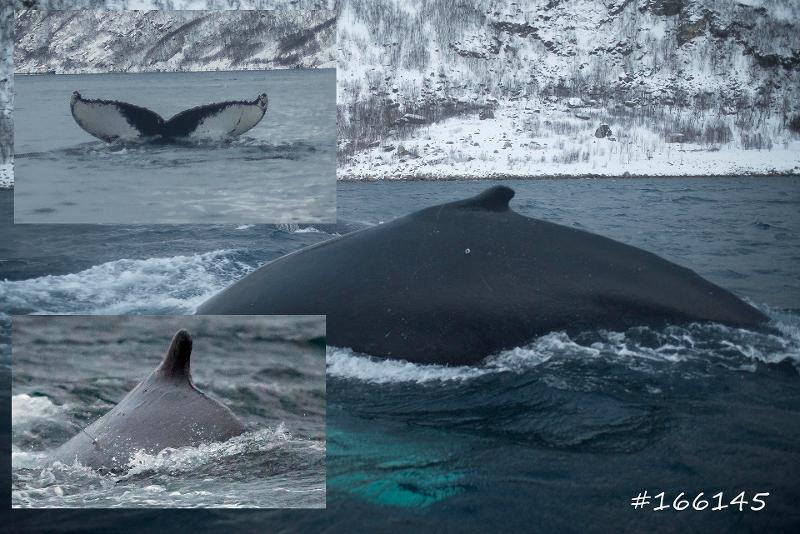About the Project

When a humpback whale dives, they usually lift their tail flukes, showing the underside of the tail. Each fluke has a unique pattern and no whales in the world look the same. By photographing the flukes, scientists can recognize particular individuals and follow their migration worldwide. This technique allows us to follow the migration of individuals over long time-scales all across the Atlantic. However, in order to get more detailed and continuous information about the whales’ movements, but over shorter time scales, we have also used satellite tagging.
In the 2015/16 season, we satellite tagged 10 humpback whales in the fjords outside Tromsø in Northern Norway and managed to follow several of them all the way to the Caribbean and partly back again. It is the longest distance and time-period a humpback has been tracked in the North Atlantic. In addition, we also satellite tagged killer whales within the same time period. In early September 2018, the we also tagged 10 humpback whales in the northern Barents Sea, with the intention of following them from their food areas in the north and towards their possible mating journey towards tropical waters during winter. Perhaps they will also make a stop at the coast of northern Norway to feed on overwintering herring, like many have done in the recent years. In addition to electronic tagging and ID images, we have also collected biopsy samples for genetics, environmental pollutants and isotope analyzes (diet). In connection with the new Whalefeast project (2018-2021), we have also started to collect "environment-DNA” (eDNA) to test if we possibly can detect different whale species and their numbers in different areas, without the need to visually observe, identify and count them. All these data will be included as part of minimum of two doctoral degrees at UiT, various master's theses and other work.
The research is a collaboration between scientists at UiT - The Arctic University of Norway (project leader), the Institute of Marine Research (Bergen and Tromsø), the Norwegian Institute for Nature Research, Akvaplan-niva, The University of Aarhus (Denmark) and Alaska Fisheries Science Center (USA). The main purpose of the project is to gain better knowledge about the behavior of humpback and killer whales, both before, during and after the period they feed on overwintering herring in the fjords or off the coast of Northern Norway. We also aim to investigate how the whales interact with fishing activity and tourist boats. The whales also give us indirect information on herring movement over large areas at different times, which can be of management significance for both herring and whales. This information will be relevant to fishing and possibly petroleum activities offshore, which is a focus for one of one of the PhD candidates.
Whilst the Whaletrack project since 2013 has focused on mapping the horizontal and vertical migration patterns of humpback and killer whales, the new Whalefeast project (2018-2021) will also include a closer cooperation with the fisheries and tourism industry, as well as using eDNA- techniques in addition to already collected data. It will include social science studies of the impact that the whale arrivals have had, and has, on the tourist and fisheries industries.
Contact persons: Audun Rikardsen (UiT): audun.rikardsen@uit.no, Mari-Anne Blanchet (UiT): marie-anne.e.blanchet@uit.no, Nils Øien (HI): nils.oien@hi.no, Martin Biuw (HI): martin.biuw@hi.no, Fredrik Broms (hvalid.no): fredrik.broms@gmail.com, Lars KLeivane, (LKARTS-Norway, tagging methods): lkarts@lkarts.no)